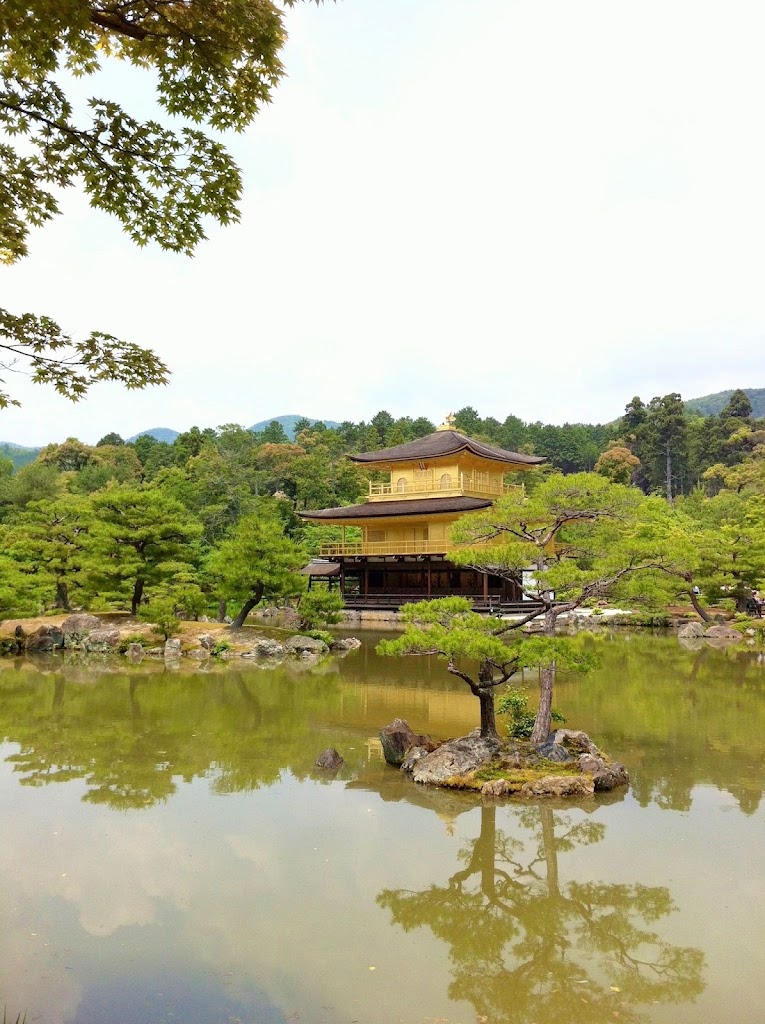Previous Post "DAY 28: KYOTO Part 1 - Planning a Trip for a Party of Six"
Kyoto was the capital city of Japan from 794 to 1869, and is the cultural center of Japan. Kyoto-ites go along way to preserve many of the cultural traditions of Japan that originated and developed there. It is said that during World War II, the United States considered targeting Kyoto with an atomic bomb; however, the city was removed from the list of targets and replaced by Nagasaki. As a result, Kyoto is one of the few Japanese cities that still have alot of prewar buildings and townhouses.
A quick visit straight out of the Kyoto train station is Nijo Castle in the heart of the city. Nijo Castle was built as the residence for the Tokugawa Shogun in 1603. Nijo Castle was used by the 15th Tokugawa Shogun, Yoshinobu, in 1867 to declare the return of authority back to the Imperial Family from military dictatorship since 1192. A small entrance fee gains access to the castle grounds, gardens, and a walk through the actual castle where the wooden floor boards of the hallways were designed to squeak on purpose to alert the residents of anyone approaching. No interior photographs are allowed.
(The entrance to Nijo Castle, castle grounds)
Next, we made our way to Kinkaku-ji (Golden Pavilion) in the northern part of the city. The Golden Pavilion is a Buddhist hall containing relics of Buddha on the temple grounds of Rokuon-ji. This was originally a retirement villa in 1397 for the 3rd Shogun, Ashikaga Yoshimitsu, but was donated as a Buddhist temple after his death. Kinkaku-ji is named because the top 2 floors are completely covered in gold leaf and the interior of the 3rd floor is also covered in gold leaf. Other sites on the grounds include a Buddhist temple with a century old tree in the shape of a boat. There is also a tea house used for tea ceremonies, watering hole for the shogun, waterfalls, statues, etc. Kinkaku-ji is a very popular attraction so it tends to get very crowded; although the walk around the grounds is very nice.
(the Golden Pavilion)
(centuries old tree that has been shaped into a ship at Kinkaku-ji)
Very close to Kinkaku-ji is one of my favorite places, the rock garden at Ryoan-ji. Again, this was an aristocratic villa but became a Zen Buddhist temple in 1450. The famous rock garden is interesting. It consists of 15 rocks laid out in small groups, but at least one rock cannot be seen from any vantage point. There are nice walking trails around the temple grounds. We got a good close up view of a large cedar tree. Cedar bark is used to build the roofs on many of the traditional Japanese buildings as it tends to be oily to resist water and bugs.
(the rock garden at Ryoan-ji)
(a small replica of the rock garden)
We drove through the Kyoto countryside on our way to Arashiyama (Storm Mountain), where we grabbed some lunch. We were mesmerized by the vegetable vending machine in the middle of nowhere! Looks like the farmers can put their veggies up for sale without having to stick around at a farmers' stand. Ingenious.
(veggie vending machine)
(the gardens of Tenryu-Ji Temple)
In Arashiyama is Tenryu-ji ("Heaven Dragon" Temple), another Buddhist temple built in 1339 by Shogun Ashikaga Takauji. The gardens of Tenryu-ji has survived centuries of fires and wars, and is beautiful. However, our main objective was to make the 20 minute hike through the Sagano bamboo grove, down to the Hozu River that connects to the Katsura River, and back to the Tenryu-ji Temple.
(in the bamboo forest)
(Hozu River in Arashiyama)
(a Merry Maids van! House in neighborhood of Arashiyama)
Here is the shortest history of Japan, ever: Japan was heavily influenced by China, and inhabitants have been living on these island since the ice age. By the late 7th century, the emperor ruled Japan and became a civilized centralized kingdom. Nara became the first permanent capital of Japan in 710. However, Emperor Kammu moved the capital to Kyoto in 794. Outside of Kyoto, the Emperor's influence began to weaken when rich, aristocratic landowners began hiring private armies called samurai. The samurais of powerful rival families fought in civil wars, until the Minamoto clan won. 1192, the Emperor gave Minamoto Yoritomo, the title of Shogun and the shogun ruled Japan as a military dictatorship in the name of the Emperor until 1869. The Emperor was largely a spiritual and cultural figurehead. There were many shogun rulers over the centuries - some gained this title due to hereditary, some due to military coup, etc. For over 200 years, Japan flourished under peaceful times during the Tokugawa Shogunate Period where the shoguns went to great lengths to maintain order and isolation from the rest of the world. However, Japan could not stay isolated forever. In 1853, Commodore Perry of the United States forced trade with Japan. Treaties unfair to Japan were agreed to because Japan's armed forces were no match to foreign invasion. The shogun lost face because of his weakness, causing civil war between shogun supporters and those that wanted the Emperor restored as ruler. In 1867, Tokugawa Shogun, Yoshinobu returned authority back to Emperor Meiji, bringing in the Meiji Restoration Period where Japan modernized from a primitive, agricultural, feudal system to an industrialized country in just a few years. The Imperial family and the capital also moved to Tokyo. After World War II, the Emperor renounced his power and a constitutional monarchy was established during the American occupation. The current government of Japan has a Parliament with the Prime Minister as head of Japan, and the Emperor as a ceremonial figurehead without powers.
NEXT POST: Kyoto At Night - Gion District and Dinner at Pontocho
Click here to view more photos of Kyoto.















